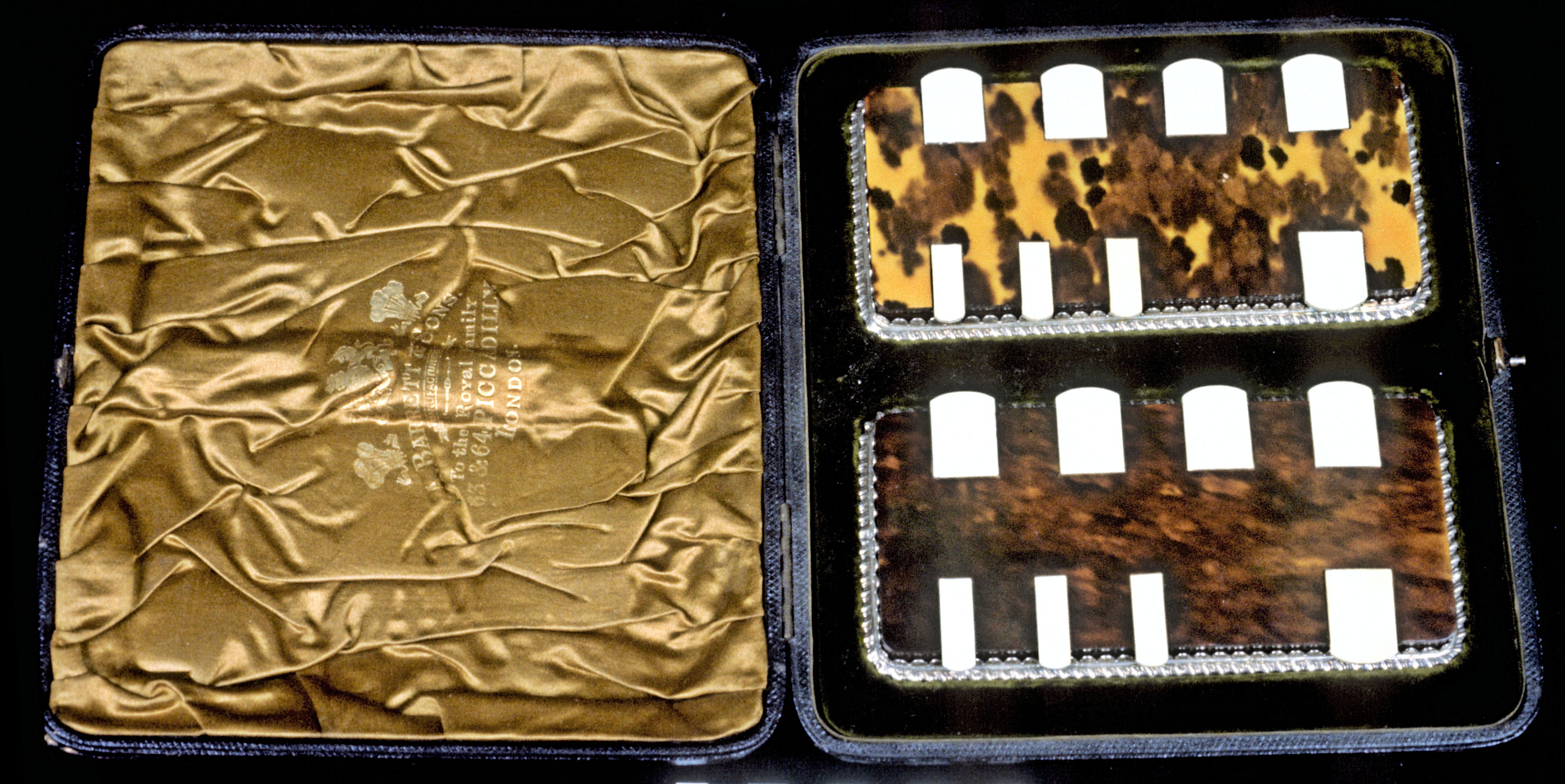
The photograph on the left is of a scoring device puchased by the Museum in 1981 from an antique dealer in Ontario, Canada. The device was made in England by Barrett and Sons, 63/64 Piccadilly, London, about 1893.
The case is 18.1cm long x 19.2cm wide x 2.5cm high, and is a hinged box with a flat bottom. The top has a rim around a raised centre. There are two metal hinges on back. The front has a metal clasp.
The inside lid (on the left of the photograph) is lined with olive green silk. The maker's name and address with a coat-of-arms is printed in gold and can be seen in the centre of the lining. The bottom inside of the case (on the right of the photograph) is lined with dark olive green velvet shaped to hold the divice.
The device is composed of tortise shell, ivory and silver. Each tortise shell base is 13.8cm long x 6.2cm wide x 1.2cm high, the ivory markers are 22.2cm long x 1.5cm wide x .2cm high, and 2.2cm long x 2.2cm wide x .75cm high. The ivory markers are hinged in place. The hinges are invisible. There are four large markers equidistant on one side, and one large and three small makers on the other side. When not in use markers are flush with the tortise shell base, protruding about .3cm. They move up to a 90 degree angle. The underside of each base is plain tortoise shell.
There are silver frames around each of the tortoise shell bases. The frames have scalloped edges. The silversmith's stamp is on the sides of each frame. Each fram is 15.5cm long x 6.9cm wide x .4cm high
Last update May 25, 2007